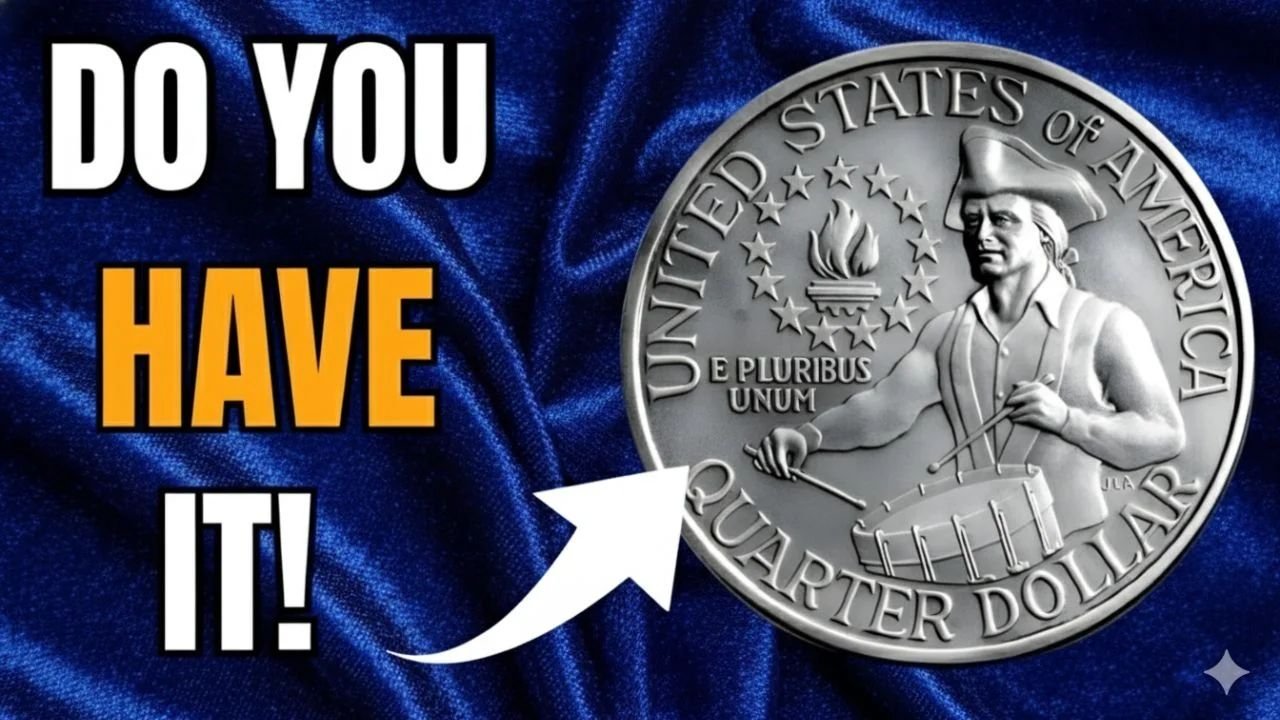2.5 Billion U.S. Quarter: We’ve all heard the tantalizing rumors: a story about an ordinary-looking coin, passed from hand to hand for decades, that is secretly worth a fortune. These tales capture our imagination because they speak to a universal hope—that extraordinary value can be hiding in the most ordinary places. While the most sensational claims often crumble under scrutiny, the real world of coin collecting is filled with genuine surprises and fascinating histories that are every bit as compelling. Let’s explore how to approach these stories with a curious yet grounded perspective.
The Anatomy of a Modern Treasure Myth
The most persistent legends often attach themselves to common coins. A prime example is the story of the “billion-dollar Bicentennial Quarter.” These quarters, minted in 1975 and 1976 to celebrate America’s 200th birthday, are familiar to nearly everyone. They feature the distinctive dual date “1776-1976” and a colonial drummer on the reverse.
The myth suggests that a handful of these quarters were struck with a catastrophic error, making one of them uniquely valuable to the tune of an astronomical sum. This narrative is powerful because it’s simple and democratic: it suggests that anyone, from a barista making change to a child checking their piggy bank, could stumble upon a life-altering discovery. It’s a classic “needle in a haystack” story, supercharged for the digital age.
A Reality Check from the World of Numismatics
When we consult the actual record books of coin collecting, a different picture emerges. Reputable auction houses and professional grading services have no verified sales of any U.S. quarter, Bicentennial or otherwise, approaching a billion-dollar valuation. The most valuable coins in the world, such as the 1933 Saint-Gaudens Double Eagle, have achieved prices in the millions, but their histories are meticulously documented and their status is undisputed among experts.
So, why does the myth live on? It thrives on the potent mix of hope and the viral nature of online content. The idea is so captivating that it encourages sharing without the need for verification. Furthermore, it borrows credibility from a kernel of truth: mint errors do exist and can add significant value, which makes the grander, fictional claim feel more plausible to a casual observer.
Your Practical Guide to a Real Treasure Hunt
The true joy of numismatics isn’t in chasing fictional billions, but in the genuine thrill of the hunt. You can absolutely find coins in your change that are worth more than their face value. Here’s a sensible approach to starting your own search.
Begin by gathering any coins that intrigue you, like the Bicentennial Quarter. Find a good light source and a magnifying glass, if you have one. Carefully examine the coin’s surfaces. Look for the mint mark, a tiny letter indicating its origin, located on the obverse (front) near Washington’s hairline. A “D” denotes Denver, an “S” San Francisco, and its absence means Philadelphia.
Next, scrutinize the details. Are the letters and numbers crisp and clear, or do they appear blurred or doubled? Is the design struck perfectly in the center? These kinds of anomalies can indicate a valuable minting error. While most of us don’t have a jeweler’s scale, a standard quarter weighs 5.67 grams; a significant deviation could signal something unusual, though this is rare.
Discovering the Real Reward
If you find a coin that seems unusual, the next step is to engage your curiosity. Take clear, well-lit photographs of both sides and the edge. Then, dive into research using reputable online numismatic forums or a guidebook dedicated to error coins. For a professional opinion, visit a trusted local coin dealer. Their expertise can provide invaluable context.
The real treasure of this hobby is the journey itself. It encourages mindfulness, connecting us to the history, art, and science of the coins we use every day. You may not find a coin worth millions, but you might discover one worth twenty dollars—or you might simply uncover a new appreciation for the small, intricate objects that pass through our lives. The greatest find is often a renewed sense of wonder, proving that you don’t need a billion dollars to feel like a treasure hunter.
A Note for the Curious Collector: If you believe you have a genuinely rare or valuable coin, the best course of action is to seek professional authentication. Reputable third-party grading services like the Professional Coin Grading Service (PCGS) or the Numismatic Guaranty Company (NGC) can provide a definitive assessment of your coin’s authenticity and condition, giving you a clear understanding of its true market value.
